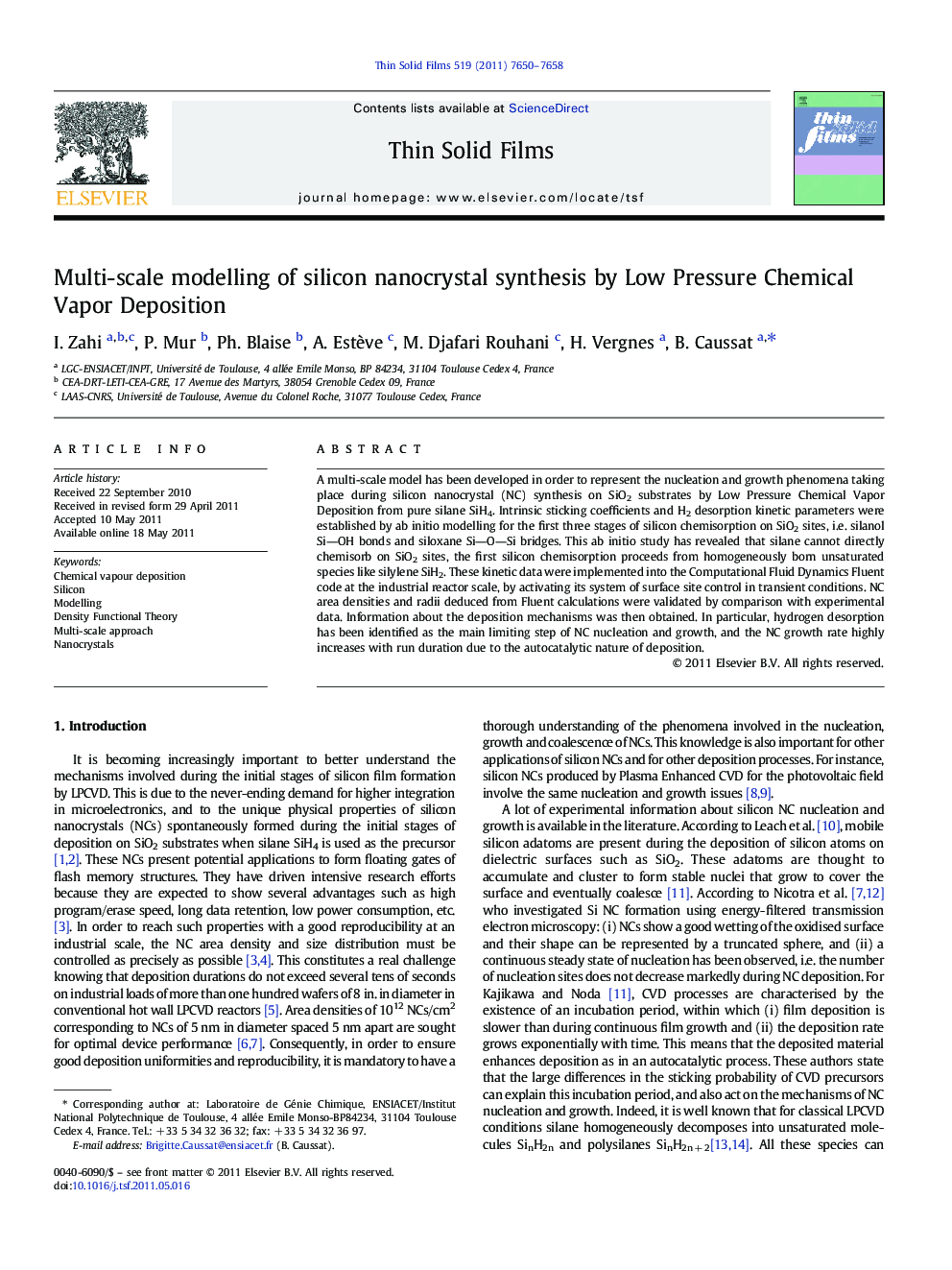| Article ID | Journal | Published Year | Pages | File Type |
|---|---|---|---|---|
| 1667758 | Thin Solid Films | 2011 | 9 Pages |
A multi-scale model has been developed in order to represent the nucleation and growth phenomena taking place during silicon nanocrystal (NC) synthesis on SiO2 substrates by Low Pressure Chemical Vapor Deposition from pure silane SiH4. Intrinsic sticking coefficients and H2 desorption kinetic parameters were established by ab initio modelling for the first three stages of silicon chemisorption on SiO2 sites, i.e. silanol Si―OH bonds and siloxane Si―O―Si bridges. This ab initio study has revealed that silane cannot directly chemisorb on SiO2 sites, the first silicon chemisorption proceeds from homogeneously born unsaturated species like silylene SiH2. These kinetic data were implemented into the Computational Fluid Dynamics Fluent code at the industrial reactor scale, by activating its system of surface site control in transient conditions. NC area densities and radii deduced from Fluent calculations were validated by comparison with experimental data. Information about the deposition mechanisms was then obtained. In particular, hydrogen desorption has been identified as the main limiting step of NC nucleation and growth, and the NC growth rate highly increases with run duration due to the autocatalytic nature of deposition.
